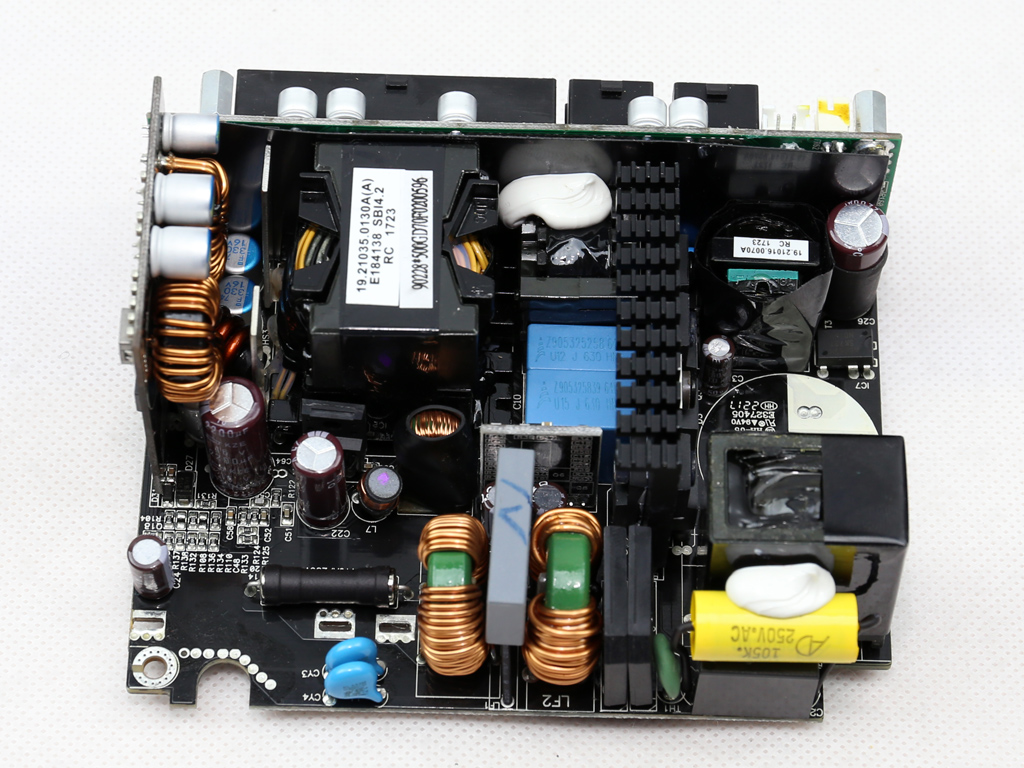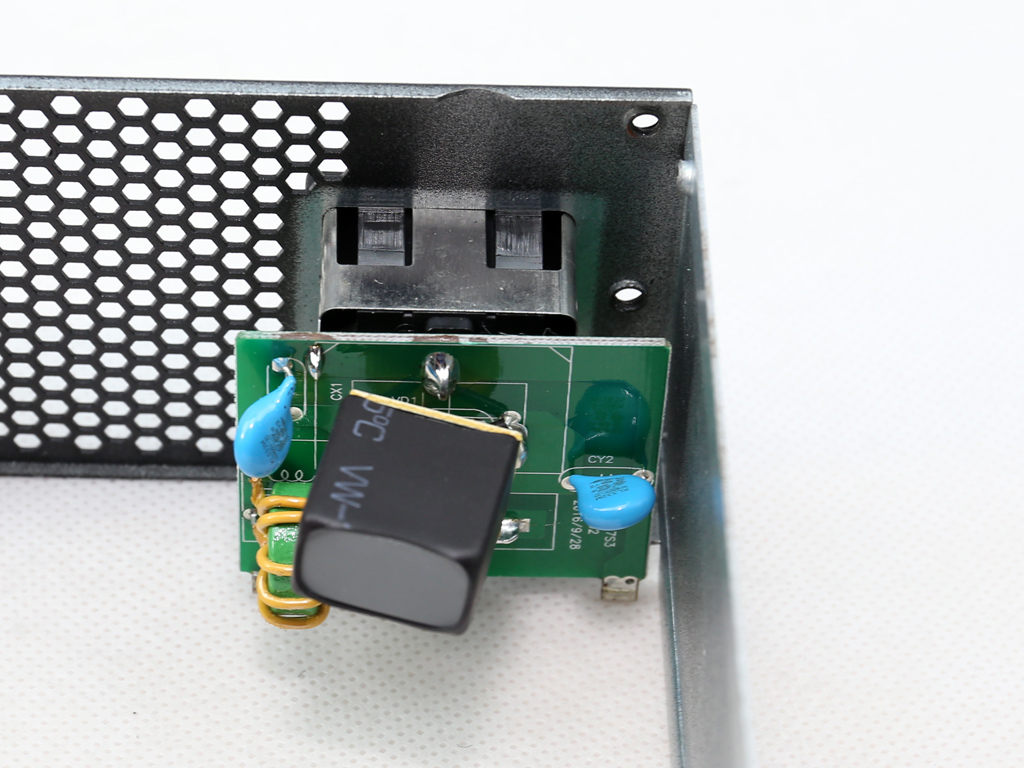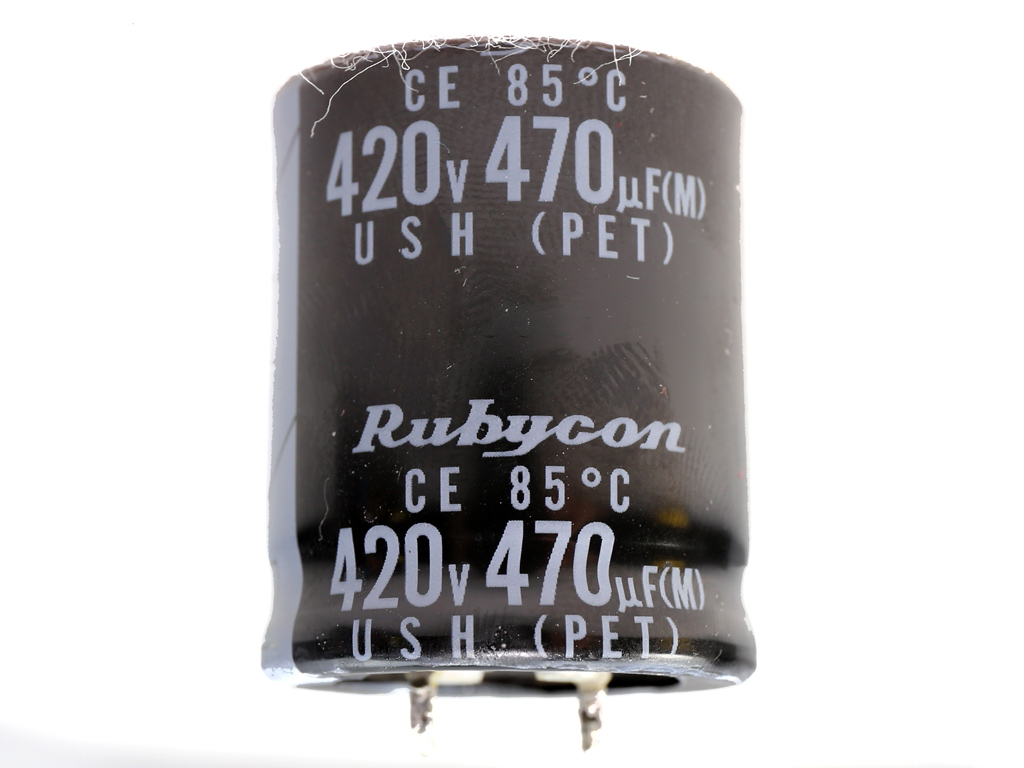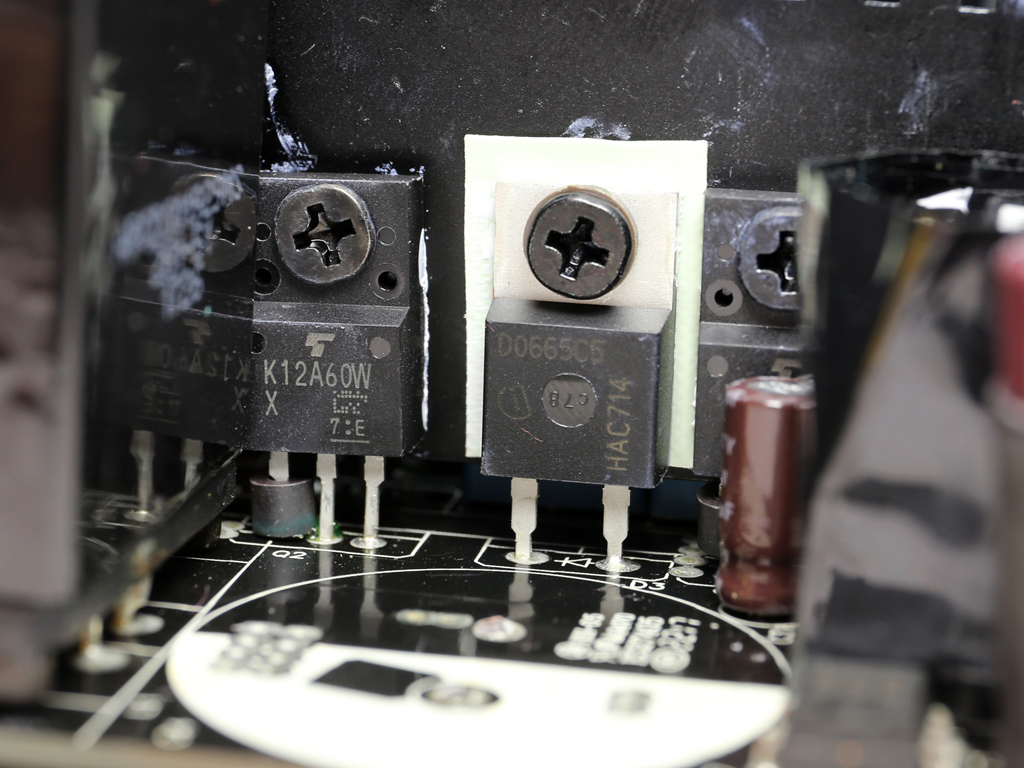SilverStone SX500-G PSU Review
Why you can trust Tom's Hardware
Teardown & Component Analysis
Parts Description
Before proceeding with this page we strongly encourage you to a look at our PSUs 101 article, which provides valuable information about PSUs and their operation, allowing you to better understand the components we're about to discuss. Our main tools for disassembling PSUs are a Thermaltronics soldering and rework station and a Hakko FR-300 desoldering gun. Finally, for the identification of tiny parts we use an Andonstar HDMI digital microscope.
| General Data | |
|---|---|
| Manufacturer (OEM) | High Power |
| Platform Model | - |
| Primary Side | |
| Transient Filter | 4x Y caps, 2x X caps, 3x CM chokes, 1x MOV |
| Inrush Protection | NTC Thermistor & Relay |
| Bridge Rectifier(s) | 2x GBU1506 (600V, 15A @ 100°C) |
| APFC MOSFETs | 2x Toshiba TK12A60W (600V, 11.5A @ 150°C, 0.3Ω) |
| APFC Boost Diode | Infineon IDH06G65C5 (650V, 6A @ 145°C) |
| Hold-up Cap(s) | Rubycon (420V, 470uF, 3000h @ 85°C, USH) |
| Main Switchers | 2x Toshiba TK12A60W (600V, 11.5A @ 150°C, 0.3Ω) Driver IC: Silicon Labs Si8233BD |
| APFC Controller | Infineon ICE3PCS01G |
| LLC Resonant Controller | Champion CM6901 |
| Topology | Primary side: Half-Bridge & LLC Resonant Controller Secondary side: Synchronous Rectification & DC-DC converters |
| Secondary Side | |
| +12V MOSFETs | 4x Infineon BSC027N04LSG (40V, 88A @ 100°C, 2.7 mΩ) |
| 5V & 3.3V | DC-DC Converters: 6x Infineon BSC0906NS (30V, 40A @ 100°C, 4.5mΩ) PWM Controller: Anpec APW7159C |
| Filtering Capacitors | Electrolytics: Nippon Chemi-Con (1-5000 @ 105°C, KZE), Nippon Chemi-Con (4-10,000 @ 105°C, KY) Polymers: Nippon Chemi-Con |
| Supervisor IC | SITI PS224 (OVP, UVP, OCP,SCP, PG) |
| Fan Controller | STC 15W408AS |
| Fan Model | Globe Fan S0921512MB (12V, 0.23A, Fluid Dynamic Bearing) |
| 5VSB Circuit | |
| Rectifier | 1x P10V45SP SBR (45V, 10A) |
| Standby PWM Controller | Sanken STR-A6069H |
| -12V Circuit | |
| Rectifier | KEC KIA7912PI (-12V, 1A) |





SilverStone's SX500-G is based on a High Power platform, which features a half-bridge topology on the primary side, along with an LLC resonant converter. On the secondary side, a synchronous design is backed by a pair of DC-DC converters, which generate the minor rails. Japanese capacitors are used exclusively. Besides the usual electrolytic caps, we also find a number of polymer ones. The only let-down is an 85°C-rated bulk cap. It might come from a top-notch manufacturer (Rubycon), but its lifetime is going to be much shorter than 105°C caps.




The first part of the EMI filter is on a PCB located behind the AC receptacle. It hosts two Y caps, a single X cap, a CM choke, and an MOV. The rest of this filter's components are on the main PCB: two CM chokes, two Y caps, and an X cap. All in all, the EMI filter looks to be complete.
An NTC thermistor, designed to limit inrush currents during the PSU's start-up phase, is supported by a bypass relay.
A couple of bridge rectifiers (2x GBU1506) are installed together without a heat sink to cool them off. This isn't a negative, per se, since those rectifiers lose less energy at higher temperatures.


The APFC converter uses two Toshiba TK12A60W FETs and a single Infineon IDH06G65C5 boost diode. One Rubycon bulk cap (420V, 470uF, 3000h @ 85°C, USH) has enough capacity to offer a pretty long hold-up time. The only letdown is its low temperature rating. We would like to see a 105°C cap instead, which offers a much longer lifetime.
The APFC controller, an Infineon ICE3PCS01G, is installed on a small daughterboard.
Get Tom's Hardware's best news and in-depth reviews, straight to your inbox.


Two Toshiba TK12A60Ws are the primary switching FETs, and their driver is a Silicon Labs Si8233BD IC. Those FETs are arranged into a half-bridge topology, while an LLC resonant converter helps limit energy losses.
The resonant-PWM controller is a Champion CM6901 IC, installed on the main PCB's solder side (along with the Si8233BD).
On the secondary side, +12V FETs are rectified by four Infineon BSC027N04LSG FETs. They're cooled down by the chassis, which they contact through a small thermal pad.





The filtering caps on the secondary side are provided by Nippon Chemi-Con. Besides electrolytics (KZE and KY), we also find some polymer caps.


DC-DC converters responsible for generating the minor rails are installed on a vertical board on the secondary side. In total, six Infineon BSC0906NS FETs are used. The PWM controller is an Anpec APW7159C IC.
Instead of a plain diode, the -12V rail is rectified by a KEC KIA7912PI. This IC features OTP and OCP, so even if you somehow push this weak rail too hard, the PSU won't be damaged. We've started seeing more PSU failures due to -12V overloading. Thus, platforms utilizing a proper IC for -12V regulation (instead of a simple diode) are increasingly appreciated.




A number of Chemi-Con polymer caps on the modular board's front side provide an extra ripple filtering layer.


On the left side of the modular board, we spot an STC 15W408AS that might be used by the fan control circuit, along with the supervisor IC, a SITI PS224, responsible for all essential protection features except OTP. That feature is enabled through another circuit.


The 5VSB rail is regulated by a P10V45SP SBR; its PWM controller is a Sanken STR-A6069H.


High Power's soldering quality is satisfactory.


The fan is provided by Globe Fan and its model number is S0921512MB (12V, 0.23A, fluid-dynamic bearing). Because of its bearing, this fan doesn't make much noise. On top of that, the fan control circuit isn't tuned aggressively.
MORE: Best Power Supplies
MORE: How We Test Power Supplies
MORE: All Power Supply Content
Current page: Teardown & Component Analysis
Prev Page Packaging, Contents, Exterior & Cabling Next Page Load Regulation, Hold-Up Time & Inrush Current
Aris Mpitziopoulos is a contributing editor at Tom's Hardware, covering PSUs.
-
love4earthwk I'm afraid I can't find ETA-B and LAMBDA B- ratings in cybenetics sites.Reply
https://www.cybenetics.com/index.php -
Aris_Mp there has been a change/refresh on the ratings. There is no more B, C, D ratings in the new ratings. The thresholds/ranges are exactly the same, just the naming scheme has been changed in some of the ratings. If you go to the ETA and LAMBDA pages you will find the new ratings.Reply -
Lutfij Good write up Aris! Should I revive my SFF system build, I'll know what to shoot for amongst a plethora of STX PUS's.Reply





